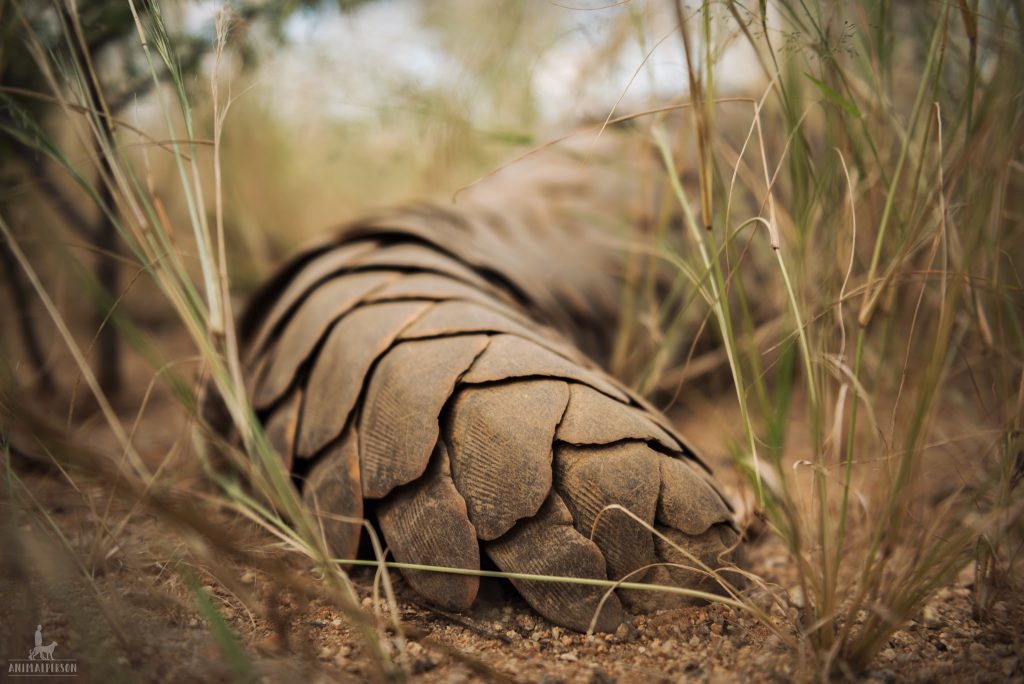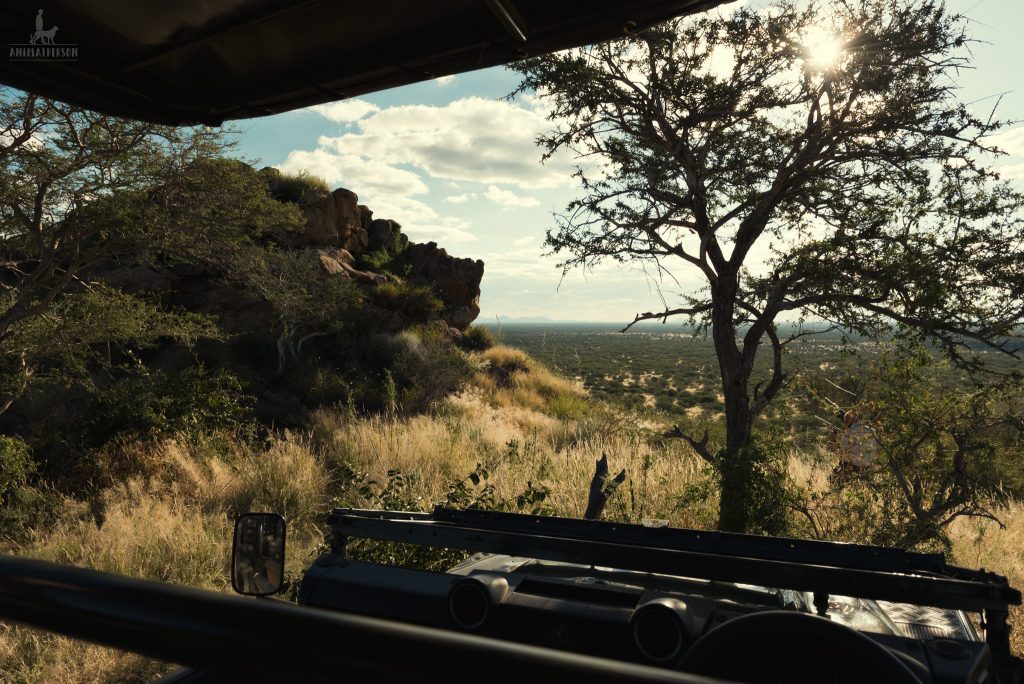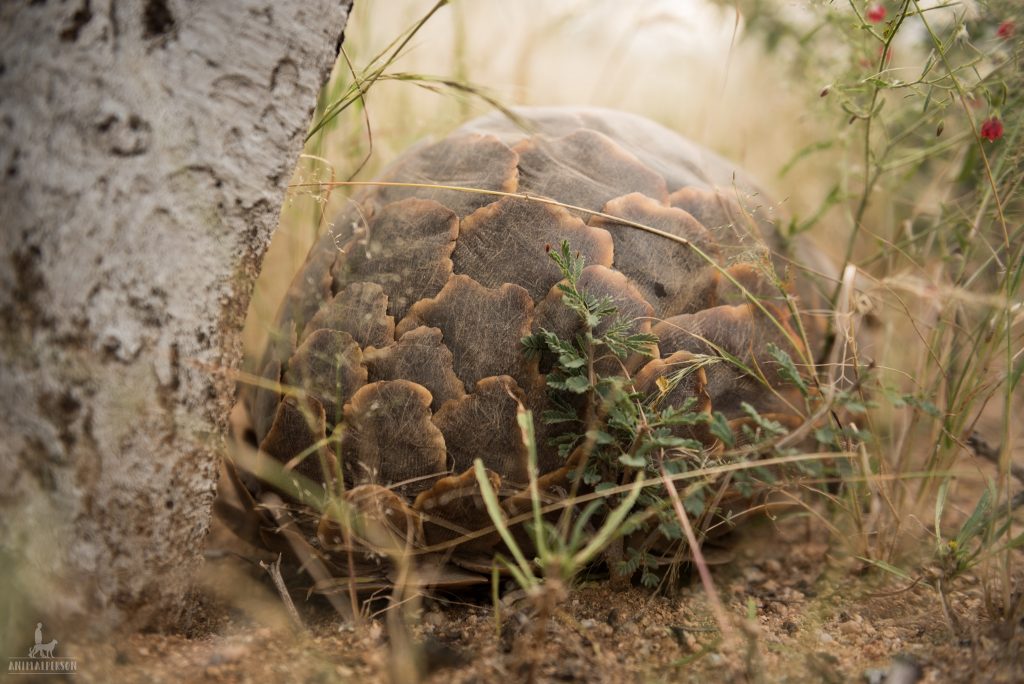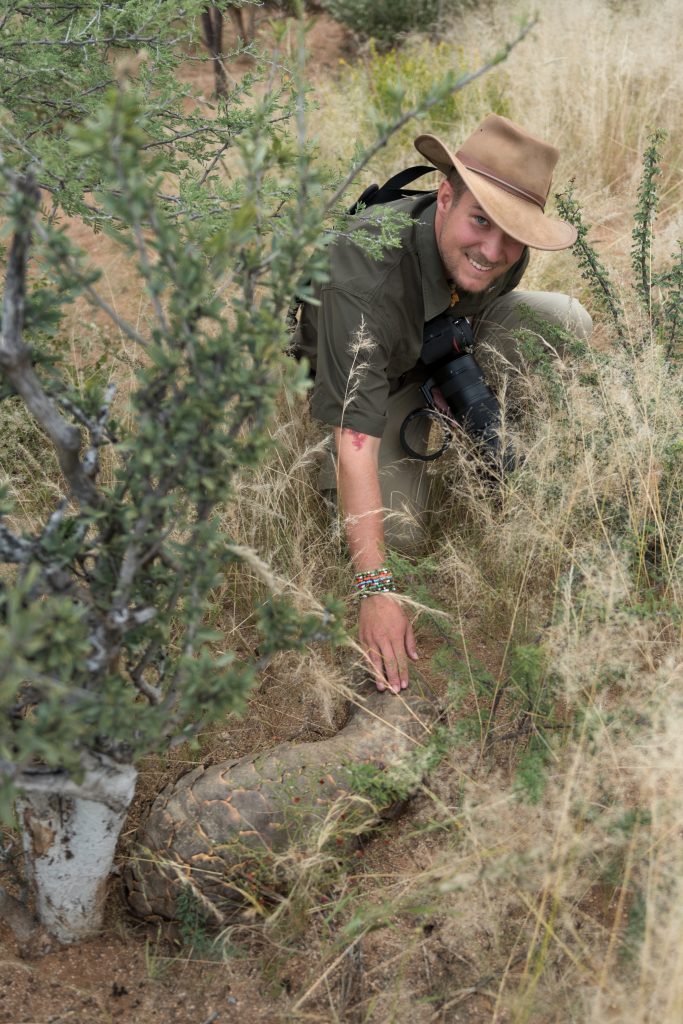
Sun is setting in the west and already that deep that the brim of my head offers no more protection against the still strong sun beams. It’s windy, vegetation is quite dense for that time of the year and we – we’re looking for a needle in a haystack.
The private wildlife protectorate “Erindi” comprises 700 km² or 70 000 hectare. A place where you can easily drive past a herd of elephants which is only 100 meters away, and you still didn’t see them. The animal we’re looking is between 40 to 80cm long and well camouflaged. Our only chance is a little DF transmitter it is wearing. Its range is limited and even we could capture its signal it wouldn’t mean finding our needle.
Right now you might be asking yourself, what animal is he talking about? It’s one of the rarest mammals you can be looking for in southern Africa. It’s one of the less examined, most endangered, most bizarre and most fascinating animals.
To make it short: it seems to be a mixture of an anteater and a little dragon – an anteater-dragon; this would be my attempt of describing it.
The English name is “Pangolin” – a name I kind of like – whereas the German name “Schuppentier” (scale animal) seems quite impersonal to me. Don’t mix it up with an armadillo. Anyway, this animal deserves a melodious name – so I will stick to its English name “Pangolin”.
And that’s the animal we’re looking for. It’s just the three of us sitting in an huge, olive green Land Rover whose driving comfort reminds me of my time in a light wheeled tank during my time in the forces.
The three of us: our guide Warren, Lisa and I. Warren is a Pangolin expert in Erindi. Nobody had ever spotted as many Pangolins as he has. They even have a ranking who of the guides has seen the most Pangolins in his or her life (or if they have seen at least one).
We start in the late afternoon because Pangolins are crepuscular to nocturnal. First, we have an half an hour drive through the scrub to the highest still passable mountain – the “Officehill”. The view is breathtaking. Scrub as far as you can see – only partly separated by smaller ranges of hills or massive mountains in the far distance. Warren gets out, assembles the aerial of the DF transmitter and climbs a bit higher.

Until he comes back I’m using my time to take some pictures. When he comes back he’s just shaking his head. No signal. We have to try it somewhere else. He tells us, all the last three attempts to find a Pangolin were without any success. We continue the search – of course. We’re driving down the adventurous “Officehill” in order to have a second try near a different rock formation20 minutes later.
This time he catches a weak signal in western direction. Weak – yet a signal!
Unfortunately, that doesn’t automatically mean that we will find it. He could be in an impassable area, or in a cave under the earth or a predator might have ripped it off while trying to crack the Pangolin open.
Neither big cats like lions, leopards, nor wild dogs nor birds of prey have a chance to crack the overlapping scales if it has curled up into a ball. Only hyenas would have a chance because of them having the strongest bite of all animals.
What is a Pangolin eating? Ants, a lot of ants! Wandering through the night, it catches about 300 000 ants with its tongue which is between 20 and 60 centimeters long. That sums up to a weight of 1 kilogram of ants – while only weighing between 8 to 35 kilograms itself.
Next stop, next signal check. There it is – a constant peeping! A clear signal coming from the northern direction but: there’s no bush path to be seen. So, we have to go across country. The signal is getting stronger und the intervals are getting shorter. We stop several times to check the direction while the sun hasn’t set yet. I really hope finding the Pangolin while we have some daylight left so I would be able to take some pictures.
Warren who was focused all the time stops again and gets off the car. He walks a little bit and comes back after two minutes. He’s smiling from ear to ear. “You found it?”, I’m asking excited. “Yes”, he answers, still smiling. “Right over there, sleeping under that little tree. Not in a cave, right here under the sky.” YES! Lucky me! We get off the car and follow our still smiling guide through the bush.

Suddenly, there it is – a camouflaged little rock, which isn’t one. A rock made out of scales. Its itsy-bitsy face lying on the ground, protected by the scales of its upper body. It’s a fascinating sight and I’m very excited.
Warren drives the car a little bit closer and uses the radio to tell the other guides that he found another of these mythical creatures. I’m taking come close-ups of the wonderful scales when I suddenly hear a sound: a quiet, but deep breathing with occasional sighs – quite similar to our cats at home! That’s just like Peter our tomcat sounds when he sleeps safe and sound. I’m asking Lisa and warren if they can hear it too. Our guide comes closer until the both of us are only about 20 centimeters away from the Pangolin.”Yes, it’s incredible”, Warren says. “He’s snoring, I’ve never heard that before!”.
How awesome is that?! I’m falling right away in love with the anteater-dragon which sounds just like our tomcat at home.

In the meantime, the news had reached all the guides who are trying to convince their guests to take that trip instead of looking for lions or elephants. Obviously, most of them don’t really know what a Pangolin is and don’t want to go across country for that not-well known animal. Unfortunately, the average safari guest only want to see the “Big Five”, because that’s what you must have seen. If an animal isn’t exceptional loud or big, it’s not worth looking for. They only want to see elephants or lions and, if possible, all in one day. Poor guides! If it were for me – so much stupidity and ignorance would freak me out!
How exceptional is it to see a wildlife Pangolin? Warren, a guide in Erindi for 9 years, has a clear answer to that:
“Only one in a million visitors of the Krüger National park will see a Pangolin – maybe.”

The reason for the rare occurance of the Pangolin is – once again – mankind. The prices are high – the penalties are even higher than for the illegal trade of the horn of a rhino. Main customers, with over 90%, come from China – once again.
My opinion of China is not very. This comes both from my experiences at the rhino rescue center in South Africa (LINK) and several negative encounters with Chinese people. This lead to a strong refusal of the Chinese culture by me which is, in my eyes, without any respect for nature and the animals living on this planet.
In the meantime, our little ant bandit has woken up and has curled itself into a ball. I can see its little sharp face with its beady eyes – for about three seconds.
The sun sets and we leave the Pangolin, so it can go on its nocturnal hunting trip.
When we got into the Land Rover, the wind has slowed down and I add a not-cat type animal to my most favored animals. Well, at least it sounds like a cat while being asleep.
